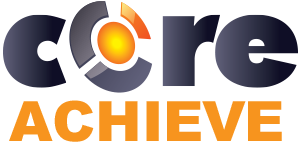Implementing Wide-Spread Transformative Training Experiences
September, 29 2023
Other posts:
Enhancing Team Dynamics for Effective Group Decision-Making with LMS Integration
Organizations increasingly rely on collaborative efforts to solve complex problems, innovate, and adapt to change, but how do we ensure that collaboration is happening.
Maximizing Small Business Potential with Training Technology
Training technologies can push small businesses ahead of their competitors, but what are the factors that go into choosing the right technology?
Unlocking Employee Potential: The Transformative Benefits of an Interactive Learning Management System (LMS)
Interactive training allows for unlocking employee potential, but how is it done?
Building a Robust Sales Pipeline with Training
Every organization wants a streamlined sales pipeline, but building one requires a series of interlocking activities with one of the most important being training.
Strategies for Adapting In-Person Training to Online Platforms
Online training is one of the most flexible ways of delivering training across organizations, but how do you even begin to adapt in-person training into online?
An LMS is perfect for training specific tasks or activities, but they are these specifications are typically nothing too major. However, how far can one push an LMS' training?
The workforce is more connected than ever now, which while causing innovations and opportunities, has also created a sink or swim competitive landscape. Leading to Individuals and organizations alike recognizing that the key to success lies in one's ability to adapt, evolve, and continuously acquire new skills. Learning Management Systems (LMS) have become instrumental in facilitating this ongoing process of transforming talent.
The Era of Continuous Learning
As mentioned above, remaining competitive and relevant requires constant advancing of skills, therefore professionals must embrace the philosophy of continuous learning. This means seeking opportunities to acquire new knowledge, refine existing skills, and stay up-to-date with industry trends. However, sometimes this process goes beyond simply refining or gaining new skills, but a whole training transformation.
The Role of LMS in Transformative Training
Access to Diverse Learning Resources
An LMS can offer a vast repository of courses, modules, and resources covering a wide range of subjects. Depending on how an organization implements their LMS, users can then sift through the training content to find a path that piques their interest.
Flexible Learning Paths
Learning paths are essential for transformative training as it allows users to ensure that they are getting the necessary content and achieving proper goals. Skills can be acquired through disconnected courses or materials, but transformative training needs to be structured with a clear beginning and end. Of course, learning paths can be customized and personalized to individual needs.
Interactive and Engaging Content
Traditional training is ripe for potential transformative opportunities, but implementing on the scale of an enterprise or between multiple locations is incredibly challenging. A trainer can address this problem by using the interactive options on an LMS. Quizzes, scenarios, discussions, or surveys should be utilized to break up the PDF files or reading, transformations come from practice—not unengaging content.
Expert Guidance and Mentorship
As mentioned in a previous post, an LMS is a great opportunity for employees to share their experiences to ensure that trainees are aware of how their new skills will be used in real life situations and the impact of them. Through an LMS, a more experienced employee can take on a pseudo-mentor role for users in training.
Examples of Transformation
Career Change
The most common example of training transformation is a complete career change, but this does not equate to a sunken cost. Employees can change their career within organizations until they find the best fit for them. An LMS makes this process much easier and may turn a quitting employee to someone just moving departments.
Leadership Development
Whenever someone finds the confidence to be a leader, they often feel like a brand-new person. Yet, this change is not an exclusive club, people can be trained into being great leaders and an LMS can offer this transformation without the need for special consultants or conferences.
Embracing Innovation
Embracing innovation is a transformation, albeit a subtle one. Employees can often get stuck in their way of doing business without any consideration for efficiency, but with an LMS employees can be exposed to new practices without ending their current processes. This allows for innovation to come in without being overwhelming or destructive to the organization or its people.
Measuring Transformation
Skill Mastery
Trainers can demonstrate their newfound knowledge and skills through assessments and certifications, providing tangible evidence of transformation.
Self-Assessment
Self-Assessment is important, but it should not be the only way to measure. Rather, self-assessment should be mixed with the other feedback forms to truly get an understanding of the bigger picture.
Peer and Mentor Feedback
Feedback from people within the organization is incredibly useful but should be handled delicately and with intention. For example, if a person is training leadership the feedback should be solely focused on that with potential any toxic feedback filtered or thrown out.
Professional growth, especially big changes like switching careers or becoming a leader, can be incredibly daunting and difficult. An LMS can help ease this pain by giving users direction, goals, and feedback while making an organization more adaptable. In this way, an LMS allows organizations to invest in their employees and see growth from within.

Leave comment: